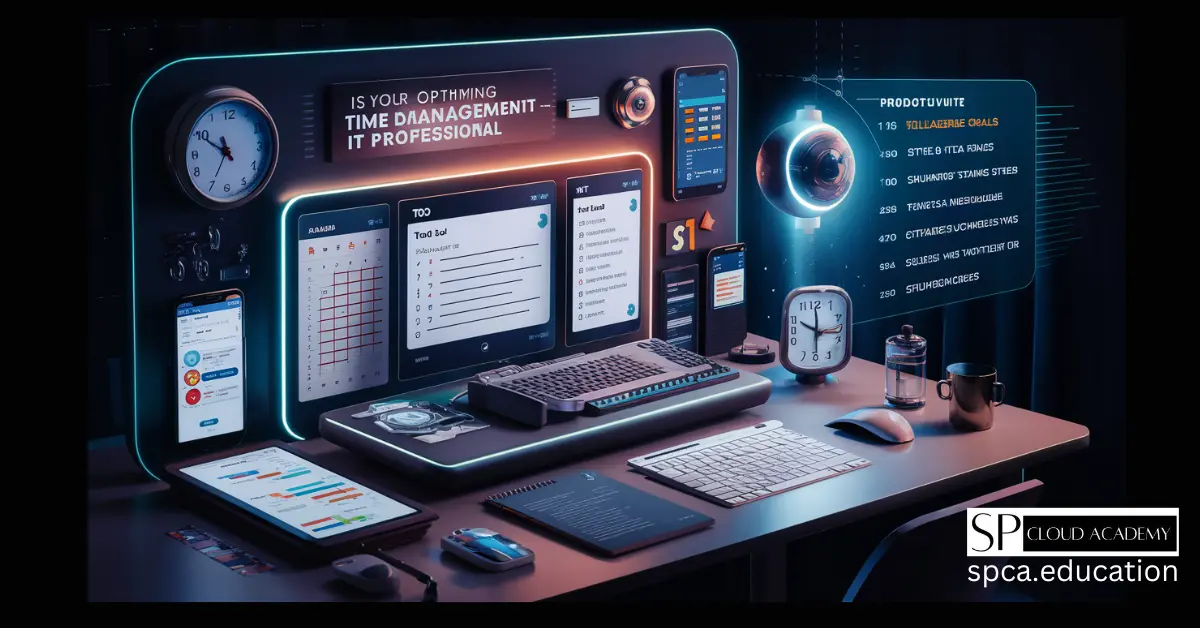In an era defined by rapid technological advancements, globalization, and shifting economic paradigms, the workforce must evolve to remain competitive and resilient. Technical and Vocational Education and Training (TVET) stands as a cornerstone for preparing individuals with practical, job-specific skills. However, to meet the demands of the future, TVET must go beyond traditional training and embrace innovative strategies for upskilling and reskilling. This article explores how TVET can build a future-ready workforce by implementing effective strategies to bridge the skills gap, adapt to digital transformation, and prepare workers for the future of work. Spanning over 5000 words guide offers actionable insights for stakeholders in workforce development.
Introduction: Navigating the Changing World of Work
The world of work is undergoing a seismic shift. Technologies like artificial intelligence (AI), automation, and the Internet of Things (IoT) are reshaping industries, while globalization connects economies and labor markets like never before. According to the World Economic Forum’s Future of Jobs Report 2023, 44% of workers’ core skills are expected to change within the next five years due to technological disruption. Meanwhile, the COVID-19 pandemic accelerated digital transformation, highlighting the urgent need for vocational training that equips workers with relevant, adaptable skills.
TVET, or Technical and Vocational Education and Training, is uniquely positioned to address these challenges. Unlike traditional academic education, TVET focuses on hands-on, practical skills tailored to specific careers—think electricians, healthcare aides, or IT technicians. Yet, as the skills gap widens and Industry 4.0 transforms job roles, TVET must evolve. This evolution hinges on two key strategies: upskilling, which enhances existing skills, and reskilling, which equips workers with entirely new competencies for different roles.
Why does this matter? A future-ready workforce is not just a buzzword—it’s a necessity for economic growth, social stability, and individual empowerment. By leveraging TVET for upskilling and reskilling, we can ensure workers thrive amid change, from adopting emerging technologies to transitioning into green jobs. This article dives deep into actionable strategies, challenges, and real-world examples to illustrate how TVET can lead the charge in workforce development.
Understanding Upskilling and Reskilling: Definitions and Importance
Before exploring strategies, let’s define upskilling and reskilling and understand their critical role in today’s economy.
What is Upskilling?
Upskilling involves enhancing the skills a worker already possesses to keep pace with advancements in their current field. For example, a mechanic might learn to repair electric vehicles, or a nurse might train in telehealth technologies. In TVET, upskilling ensures that workers remain competitive and capable of adopting new tools and techniques within their trade.
- Examples in TVET: Advanced welding techniques, updated software for graphic designers, or renewable energy certifications for electricians.
- Goal: Boost productivity, career progression, and adaptability without changing job roles.
What is Reskilling?
Reskilling, by contrast, is about acquiring entirely new skills to transition into a different job or industry. Imagine a factory worker retraining as a robotics technician or a retail employee shifting to e-commerce logistics. In TVET, reskilling opens doors to emerging sectors and mitigates job loss due to automation or industry decline.
- Examples in TVET: A carpenter reskilling as a solar panel installer, or a textile worker training in data analytics.
- Goal: Enable career pivots, reduce unemployment, and align skills with market demand.
Why Are They Crucial?
The need for upskilling and reskilling stems from several global trends:
- Technological Disruption: Automation and AI are phasing out repetitive tasks while creating demand for tech-savvy workers. McKinsey estimates that 375 million workers globally may need to switch occupations by 2030 due to automation.
- Global Competition: As supply chains span continents, workers must meet international standards and adapt to shifting economic priorities.
- Demographic Shifts: Aging workforces in developed nations require longer careers with updated skills, while youthful populations in developing regions need training for modern jobs.
- Sustainability: The rise of green economies demands skills in renewable energy, sustainable agriculture, and environmental management.
- Post-Pandemic Recovery: Remote work and digital tools have become permanent fixtures, requiring widespread digital literacy.
By focusing on upskilling and reskilling, TVET can empower workers to navigate these changes, ensuring they remain employable and industries stay competitive.
Strategies for Upskilling and Reskilling in TVET
To build a future-ready workforce, TVET systems must adopt proactive, innovative strategies. Below, we explore seven key approaches enriched with practical applications and keyword optimization.
1. Industry Collaboration: Bridging the Skills Gap
Collaboration with industries is the backbone of effective TVET. Employers know best what skills are in demand—both now and in the future.
- How It Works: TVET institutions partner with businesses to align training with real-world needs. This might include forming advisory boards with industry leaders or co-designing programs.
- Examples: A tech company might work with a TVET school to develop a cybersecurity course, or a manufacturing firm might sponsor training in 3D printing.
- SEO Keywords: Industry collaboration, workforce development, TVET partnerships, skills gap.
- Benefits: Learners gain relevant skills, employers secure talent, and training stays ahead of trends like Industry 4.0.
2. Curriculum Development: Staying Relevant
A static curriculum is a recipe for obsolescence. TVET must evolve to reflect emerging technologies and market shifts.
- How It Works: Regularly update course content based on industry feedback and technological advancements. Include modules on AI, renewable energy, or data analytics.
- Examples: Adding cloud computing to IT programs or sustainable construction to carpentry courses.
- SEO Keywords: TVET curriculum, vocational training updates, technical education trends.
- Benefits: Graduates leave with cutting-edge skills, ready to tackle modern job demands.
3. Flexible Learning Pathways: Accessibility for All
One-size-fits-all training doesn’t cut it anymore. Flexibility ensures TVET reaches diverse learners, from full-time workers to rural communities.
- How It Works: Offer modular courses, part-time options, or micro-credentials that stack toward qualifications. Recognize prior learning (RPL) from work experience.
- Examples: A welder might take a short course in robotic welding, or a mother might study healthcare skills online.
- SEO Keywords: Flexible learning, TVET accessibility, micro-credentials, lifelong learning.
- Benefits: More people upskill or reskill without disrupting their lives, broadening workforce participation.
4. Digital Learning Platforms: Scaling Education
Technology can make TVET more accessible and engaging, especially in the age of digital transformation.
- How It Works: Use online platforms, virtual labs, and augmented reality (AR) to deliver training. Offer e-learning for remote learners.
- Examples: A virtual plumbing simulator or an online coding bootcamp for IT reskilling.
- SEO Keywords: Digital learning, TVET online, e-learning platforms, vocational training tech.
- Benefits: Scalable, cost-effective training reaches underserved areas and enhances learning through interactivity.
5. Soft Skills Training: Beyond Technical Expertise
While technical skills are vital, soft skills like communication and adaptability are equally prized by employers.
- How It Works: Integrate training on teamwork, problem-solving, and leadership into TVET programs via group projects or workshops.
- Examples: A construction student learns project management, or an IT trainee practices client communication.
- SEO Keywords: Soft skills training, TVET employability, workforce skills.
- Benefits: Graduates become well-rounded, versatile professionals ready for collaborative workplaces.
6. Apprenticeships and Internships: Hands-On Experience
Nothing beats real-world practice. Apprenticeships and internships bridge the gap between classroom and career.
- How It Works: Partner with employers to offer structured on-the-job training as part of TVET programs.
- Examples: An aspiring electrician apprentices with a local firm, or a reskilling worker interns in renewable energy.
- SEO Keywords: TVET apprenticeships, vocational internships, hands-on training.
- Benefits: Practical skills, employer connections, and smoother job transitions.
7. Promoting a Lifelong Learning Culture: Continuous Growth
In a fast-changing world, learning never stops. TVET must foster a mindset of ongoing development.
- How It Works: Offer workshops, certifications, and awareness campaigns to encourage continuous skill updates.
- Examples: A seminar on AI trends for engineers or a career fair promoting lifelong learning.
- SEO Keywords: Lifelong learning, TVET culture, continuous education, future of work.
- Benefits: Workers stay agile, adapting to new opportunities throughout their careers.
Challenges and Solutions in TVET Transformation
Implementing these strategies isn’t without hurdles. Here’s how to address common challenges:
1. Funding and Resources
- Challenge: Modernizing TVET—think new labs or digital tools—requires significant investment.
- Solution: Secure government grants, industry funding, or public-private partnerships. For example, Germany invests €1.8 billion annually in its vocational system.
- Keywords: TVET funding, workforce development resources.
2. Access to Technology
- Challenge: Rural or low-income learners may lack internet or devices for digital learning.
- Solution: Subsidize tech access, partner with telecoms, or provide offline materials.
- Keywords: TVET accessibility, digital divide, vocational training tech.
3. Resistance to Change
- Challenge: Workers may fear retraining or see it as unnecessary.
- Solution: Highlight benefits (e.g., job security) and offer support like mentorship. Singapore’s SkillsFuture credits incentivize participation.
- Keywords: TVET motivation, reskilling barriers.
4. Instructor Capacity
- Challenge: Teachers may not know the latest technologies.
- Solution: Provide professional development—e.g., train instructors in robotics or AI.
- Keywords: TVET instructors, vocational training quality.
Real-World Examples: TVET Success Stories
Let’s see these strategies in action through global case studies:
Germany’s Dual Vocational System
- Overview: Combines classroom learning with paid apprenticeships, involving 50% of German youth.
- Strategies: Industry collaboration, apprenticeships, updated curricula.
- Outcome: 5.7% youth unemployment rate (2022), far below the EU average.
- Keywords: German TVET, dual training, workforce readiness.
Singapore’s SkillsFuture Initiative
- Overview: Offers every citizen $500 credits for approved courses, promoting lifelong learning.
- Strategies: Flexible pathways, digital platforms, soft skills focus.
- Outcome: Over 600,000 participants in 2022 alone.
- Keywords: SkillsFuture, TVET Singapore, upskilling programs.
Australia’s VET FEE-HELP
- Overview: Loans for vocational students reduce financial barriers.
- Strategies: Flexible learning, funding support.
- Outcome: Increased TVET enrollment by 15% in five years.
- Keywords: Australian TVET, VET funding, reskilling access.
The Role of Policy and Equity in TVET
Governments play a pivotal role in scaling TVET. Policies can fund programs, regulate quality, and promote inclusion—ensuring marginalized groups (e.g., women, rural workers) access upskilling and reskilling. For instance, India’s Skill India initiative targets 400 million workers by 2030, emphasizing equity and digital literacy.
Conclusion: A Call to Action
Building a future-ready workforce through TVET is both a challenge and an opportunity. By embracing industry collaboration, modern curricula, flexible learning, digital platforms, soft skills, apprenticeships, and lifelong learning, TVET can prepare workers for the future of work. Overcoming funding, tech access, and resistance requires collective effort from governments, industries, and educators.
The stakes are high. A skilled workforce drives innovation, closes the skills gap, and powers economies. As Industry 4.0 unfolds, TVET must lead the way—ensuring workers don’t just survive but thrive in a world of change. Stakeholders, it’s time to act: invest in TVET, champion upskilling and reskilling, and build a resilient tomorrow.
See Also
-

How Adaptive Learning Systems Are Revolutionizing Education in the Digital Age
-

Educational pathways for success: Explore training, vocational, technical, and professional education to achieve your career goals effectively.
-

The Ultimate Guide to Crafting a Winning Project Proposal: Key Steps and Best Practices for Success
-

The Ultimate List of Top Tech and Cloud Computing Blogs for Industry Insights
-

Unleashing the Power of ICT: Becoming an Effective Educator in the Digital Age
-

Significance of World Teachers’ Day 2024
-

How to Write an Amazing Article: Proven Techniques for Success
-

How to Manage Time Effectively as an IT Professional
-

Webinar Rules and Ethics: The Ultimate Guide for Professionals
